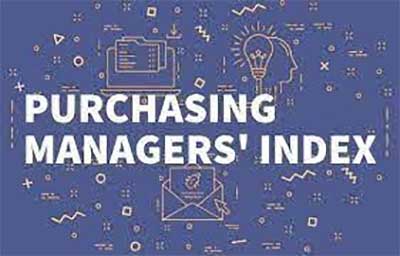GS-3: Indian Economy and issues relating to planning, mobilization of resources, sector of economy.
Key words: PMI, IHS Markit, monthly, IIP, expansion, contraction, GDP
Why in News:
India’s manufacturing sector recorded the strongest production expansion in nine months in November, with the survey-based IHS Markit India Manufacturing Purchasing Managers’ Index (PMI) climbing to 57.6, from October’s 55.9.
What is Purchasing Managers’ Index (PMI)?
- The Purchasing Managers’ Index (PMI) is an indicator of the economic health of the manufacturing and services sector. It indicates the growth level and growth potential for manufacturing and services sector in a country.
- It is a survey-based measures that asks the respondents about changes in their perception of some key business variables from the month before.
- It is calculated separately for the manufacturing and services sectors and then a composite index is constructed.
Who releases Purchasing Managers Index in India?
- The Institute of Supply Management (ISM) originally developed PMI in 1948 for the United States. ISM estimates PMI for the US now.
- For India, the PMI Data is published by Japanese firm Nikkei and compiled and constructed by IHS Markit.
IHS Markit
- IHS Markit is a dynamic team that includes more than 5,000 analysts, data scientists, financial experts and industry specialists. Its global information expertise spans numerous industries, including leading positions in finance, energy and transportation.
- IHS Markit is headquartered in London, United Kingdom and has 89 office locations across 32 countries.
How is the PMI derived?
- The PMI is derived by sending fact-based questions to a large number of companies in the concerned sector.
- PMI includes five major indicators, which have different weights in the final index.
- For Manufacturing PMI the survey takes New orders (30%), Output (25%), Employment (20%), Suppliers’ Delivery Times (15%) and Stock of Items Purchased (10%), with the Delivery Times Index inverted so that it moves in a comparable direction.
- While for Services PMI, the survey examines sales, employment, inventories, and prices.
- The survey also asks the respondents about inventory buying prices – the price at which the supplier buys, the amount he charges on it, and the price at which it is offered to the customer.
- The surveys are conducted on a monthly basis.
How does one read the PMI?
- PMI = 50, denotes there is no change in business activity. A PMI index of 50 would arise if either all respondents reported no change or the number of respondents reporting an improvement was matched by the number of respondents reporting a deterioration.
- PMI > 50, denotes expansion/improvement in business activity.
- PMI < 50, denotes contraction/deterioration in business activity.
- Higher the difference from the number 50, greater the expansion or contraction. The rate of expansion can also be judged by comparing the PMI with that of the previous month data.
- If the PMI figure is higher than the previous month’s then the economy is expanding at a faster rate. If it is lower than the previous month then it is growing at a lower rate
- If manufacturing is expanding, the general economy should be doing likewise. As such, it is considered a good indicator of future GDP levels. Many economists will adjust their GDP estimates after reading the PMI report.
Why is Purchasing Managers’ Index India important?
- Unlike other economic indicators like GDP, IIP, etc., the PMI is released early. It is collected in the second half of every month. It is a leading indicator of the economy.
- The PMI can be used to compare different countries, as it is calculated for many countries around the world. They use a similar methodology.
- Economists consider the manufacturing growth measured by the PMI as a good indicator of industrial output, for which official statistics are released later.
- Central banks of many countries also use the index to help make decisions on interest rates.
Index of Industrial Production
- The Index of Industrial Production (IIP) is a composite indicator that measures the short-term changes in the volume of production of a basket of industrial products during a given period with respect to that in a chosen base period.
- With the inception of the Central Statistical Organization (now known as National Statistics Office (NSO)) in 1951, the responsibility for compilation and publication of IIP was vested with it.
- It is a composite indicator that measures the growth rate of industry groups classified under:
- Broad sectors, namely, Mining, Manufacturing, and Electricity.
- Use-based sectors, namely Basic Goods, Capital Goods, and Intermediate Goods.
- Base Year for IIP is 2011-2012.
Source:The Hindu
Q. Consider the following statements with reference to the Purchasing Managers’ Index:
- PMI is compiled and released by the Central Statistical Organisation in the Ministry of Statistics and Programme Implementation.
- It is released on yearly basis.
Which of the statement/s given above is/are correct?
a) 1 only
b) 2 only
c) 1 and 2 only
d) Neither 1 nor 2
Ans: d









